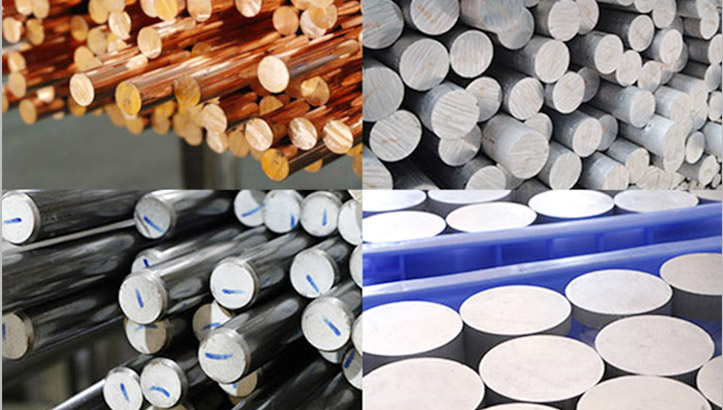What is Die Casting? Processes, Materials, and Applications
Manufacturers face the challenge of producing complex metal parts with precision and durability at scale. When traditional manufacturing methods fall short, inefficiencies and costly defects arise. Die casting provides a reliable solution for producing high-quality parts in large volumes.
Die casting is a metal casting process where molten metal is forced into a mold cavity under high pressure, which is the essence of die casting description. It’s widely used in various industries to produce durable, complex metal components with smooth finishes. The die casting process offers excellent accuracy, reduces material waste, and ensures consistent quality in mass production. Common materials used include aluminum, zinc, and magnesium alloys. Want to know how die casting can help your production process? Let’s dive deeper into its applications and advantages.
What is Die Casting?
Die casting is a manufacturing process where molten metal is injected into a mold, or “die,” using high pressure. The die is made of hardened steel, allowing it to be used repeatedly, making die casting ideal for mass production. This method creates complex shapes with excellent surface finishes and tight tolerances, meaning the parts require little or no machining.

What is the Process for Die Casting?
Die casting is a method used to create metal parts by injecting liquid metal into a steel mold under high pressure. This process is widely used in industries that require a large number of identical and precise parts. The entire process includes the following steps:
1. Mold Preparation
First, the steel mold is thoroughly cleaned to remove any debris or leftover material from previous cycles. It is then heated to a suitable temperature. A special release spray is applied to the mold surface to ensure that the metal part can be removed easily after it solidifies.
2. Metal Melting
Metal materials such as aluminum, zinc, or magnesium are melted in a furnace until they reach a liquid state. The temperature is carefully controlled to keep the metal fluid and suitable for injection into the mold.
3. Metal Injection
The molten metal is injected into the mold cavity at very high pressure and speed. This step ensures that the metal completely fills every part of the mold, even in areas with thin walls or fine details.
4. Cooling and Solidifying
After the mold is filled, the metal inside begins to cool and harden while still under pressure. This cooling step is quick and helps the part maintain its exact shape and strength.
5. Part Ejection
Once the metal has fully solidified, the mold opens automatically. Ejector pins push the finished part out of the mold cavity. The part is then removed and inspected for accuracy.
6. Trimming and Finishing
Any excess metal that formed around the edges during injection is removed through trimming. Depending on the requirements, the part may go through further processing such as polishing, coating, or machining to meet final product standards.
Types of Die Casting.
Die casting comes in two main types: hot chamber and cold chamber. The type used depends on the kind of metal being cast.
1. Hot Chamber Die Casting
This method is often used for metals that melt at lower temperatures, like zinc. In this process, the liquid metal stays in a heated container that is part of the machine. When it’s time to make a part, the machine pulls the metal into the mold automatically. It’s fast and works well for making large numbers of small parts.
2. Cold Chamber Die Casting
This method is better for metals that need higher heat to melt, like aluminum. The metal is first melted in a separate furnace. Then, it’s poured into a cold chamber and pushed into the mold using pressure. This process helps avoid damage to the machine from the higher heat.
Metal Materials Used in Die Casting.
Die casting typically uses non-ferrous metals that can withstand high pressures and temperatures while still providing strength and durability. Common metals include:
Aluminum: Lightweight, corrosion-resistant, and excellent for high-temperature applications.
Zinc: Known for its strength, flexibility, and ability to create intricate parts with thinner walls.
Magnesium: The lightest metal used in die casting, it offers a good strength-to-weight ratio, making it ideal for automotive applications. These materials are selected based on the required properties of the final product, including strength, durability, and weight.

Applications and Uses of Die Casting.
Die casting is widely used across industries due to its ability to produce high-precision parts at a lower cost than other methods. Some common applications include:
Automotive Industry: Die-cast parts such as engine blocks, transmission housings, and brake components are essential due to their strength and lightweight nature.
Consumer Electronics: Metal casing for smartphones, laptops, and other electronic devices are often die-cast for their precision and durability.
Industrial Equipment: Parts like hydraulic components, pumps, and valves are commonly produced through die casting for their reliability under pressure.
Die Casting Advantages and Disadvantages.
Die casting is a popular manufacturing method used to produce metal parts with high precision and speed. Like any process, it has both strengths and limitations.
| Advantages | Description |
|---|---|
| High Precision | Enables production of complex shapes with tight tolerances, reducing the need for secondary machining. |
| Cost-Efficient for Mass Production | Once the die is developed, the process becomes fast and economical for producing large quantities of identical parts. |
| Strong and Durable Parts | Produces components with good mechanical strength, especially with metals like aluminum and magnesium. |
| Smooth Surface Finish | Produces parts with clean, smooth surfaces that often require little or no post-processing. |
| Fast Production Cycles | High-speed injection and rapid cooling enable short production times and high output rates. |
| Disadvantages | Description |
|---|---|
| Porosity Issues | High-speed metal injection can trap air, creating porosity that weakens mechanical strength and affects sealing or corrosion resistance. |
| Limited Heat Treatment | Porosity and internal stresses often prevent effective heat treatment, limiting improvements in strength or hardness. |
| Material Limitations | Best suited for low-melting-point metals like zinc, aluminum, or magnesium. Not ideal for metals like copper or steel due to tool wear or defects. |
| High Initial Tooling Cost | Die casting molds (dies) are expensive to produce, making the process uneconomical for small production runs. |
| Size Restrictions | Not ideal for very large parts due to equipment limitations and challenges in ensuring uniform fill and cooling. |
What is Die Casting vs Casting?
Die casting and casting are both methods of shaping molten metals, but they differ significantly in process and application. In traditional casting, molten metal is poured into a mold and allowed to solidify. The mold can be made of sand, ceramic, or metal, and the casting process typically takes longer.
On the other hand, die casting uses high pressure to inject molten metal into a steel mold, ensuring precision and fast production speeds. While casting is more suitable for larger and less complex parts, die casting excels in producing intricate components with tighter tolerances.

Difference Between Die Casting and Injection Molding.
Die casting and injection molding are similar in that both use molds to create parts, but the key difference lies in the materials they handle. Die casting involves the injection of molten metals, such as aluminum or zinc, into a steel mold under high pressure.
However, injection molding uses plastic resins that are heated until molten and then injected into a mold. While die casting produces strong, durable metal parts, injection molding is better suited for creating lightweight, flexible plastic components. The choice between the two depends on the desired material properties and the application requirements.
In Conclusion
Die casting is a highly efficient manufacturing process that offers excellent accuracy and durability, making it an ideal solution for a wide range of applications.
Start Your Die Casting Project.
Are you looking for a reliable die casting service partner? VMT is an Inland Die Casting Manufacturer, which is your ideal choice. Contact us now!
We are equipped with state-of-the-art facilities to support high-precision, high-quality parts manufacturing. Whether it is complex structure automotive parts or delicate electronic product housings, we can provide you with satisfactory solutions with industry-leading die casting technology and a series of advanced production equipment.
Frequently Asked Questions About Die Casting
Is Post-Machining Always Required After Die Casting?
Post-machining is often unnecessary due to the precise finishes produced by die casting. However, certain cases may require additional machining, like adding threads, refining surface finishes, or creating complex shapes not achievable through the casting process alone.
How Much Does Die Casting Cost?
Die casting costs vary depending on factors like part complexity, material, and production volume. While tooling costs for the die are high, the per-part cost drops significantly in large production runs. Other expenses include materials like aluminum or zinc and any post-machining. Overall, die casting is cost-effective for medium to high-volume manufacturing.
Why is Die Casting Used?
Die casting is widely used for its high precision, efficiency, and ability to produce complex parts. It’s ideal for mass production, providing durable components with excellent surface finishes. Industries like automotive and electronics rely on die casting for its strength, lightweight properties, and consistency in large-scale manufacturing.
What is Die Cast Metal?
Die cast metal refers to die-cast bearing alloys. Die casting is a metal forming process in which molten metal is injected into a mold under high pressure and then rapidly cooled and solidified to form the desired shape. This process is often used to manufacture metal parts with complex shapes and high precision requirements.



